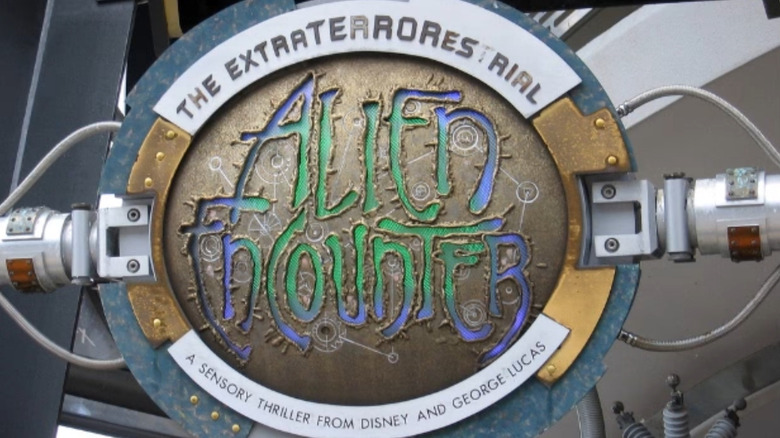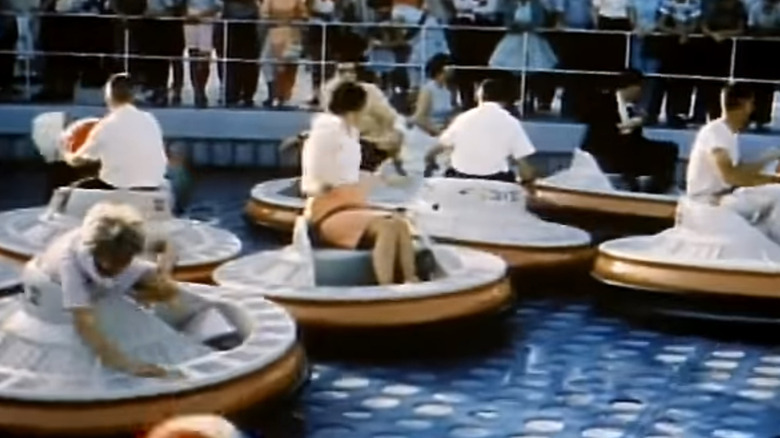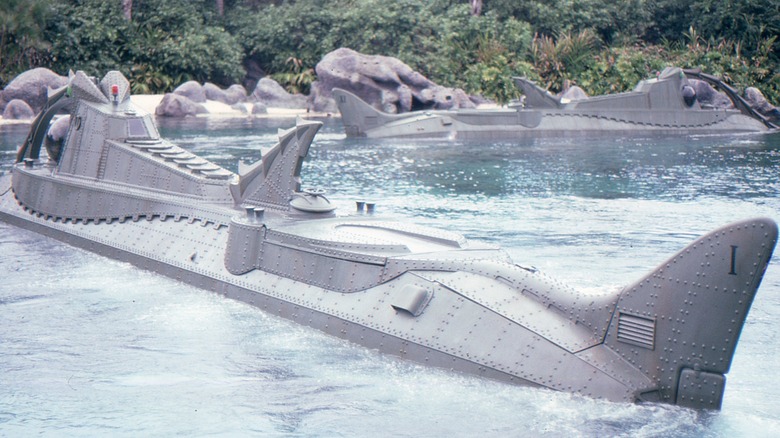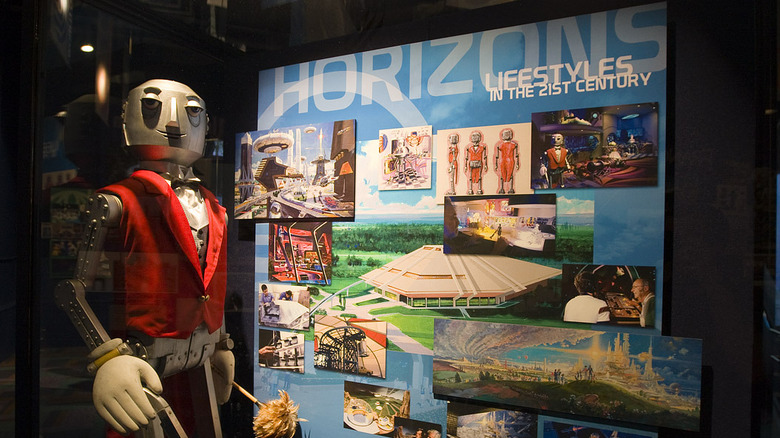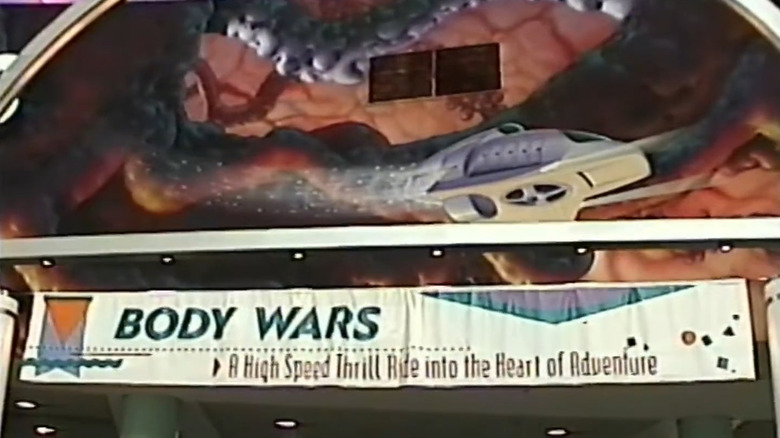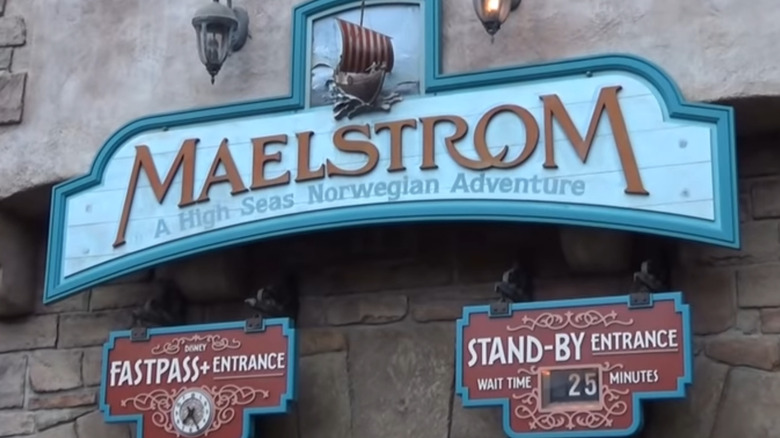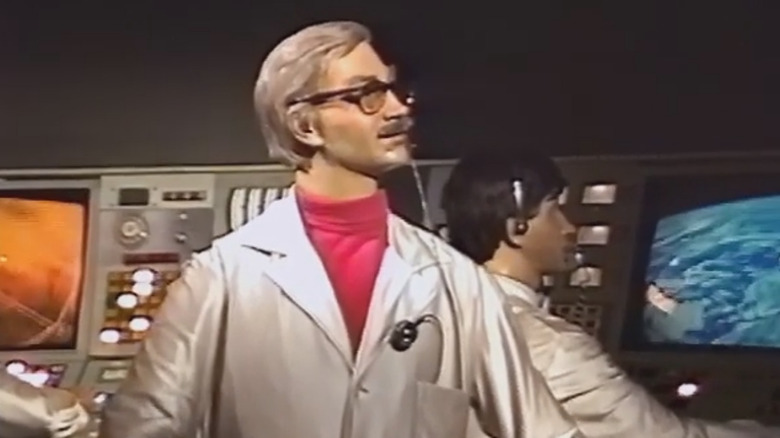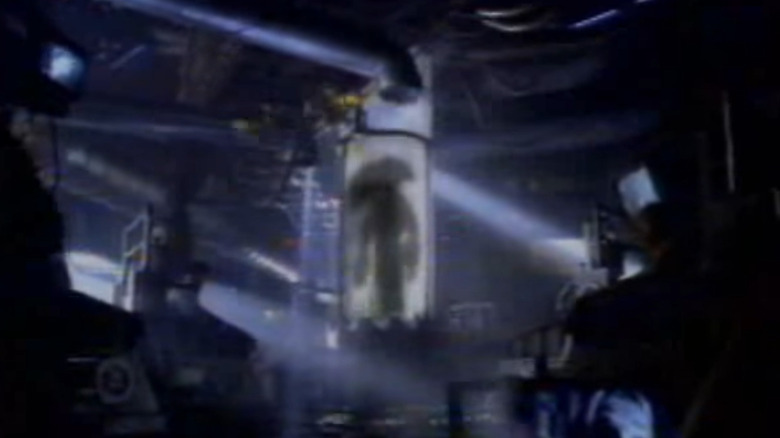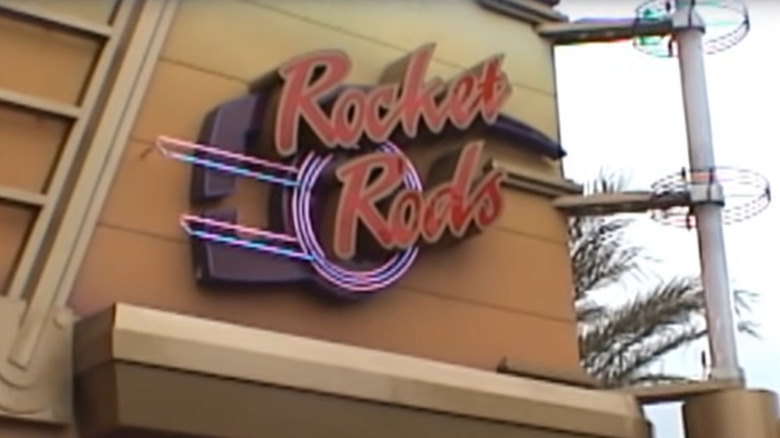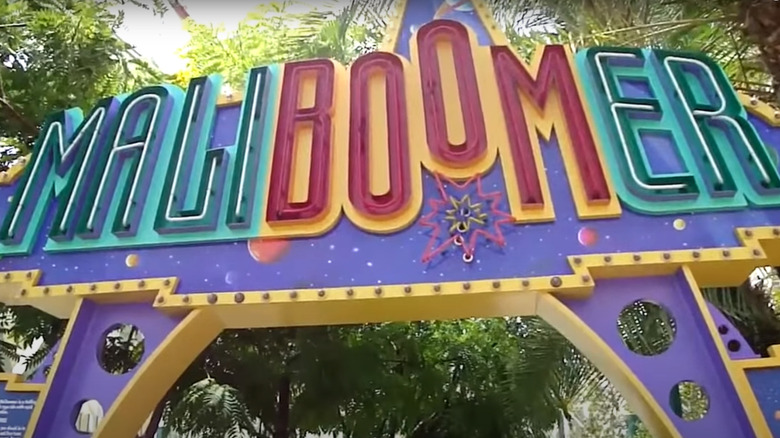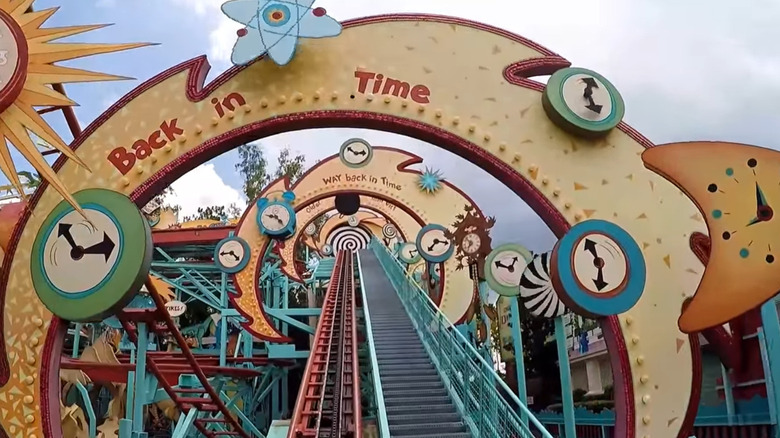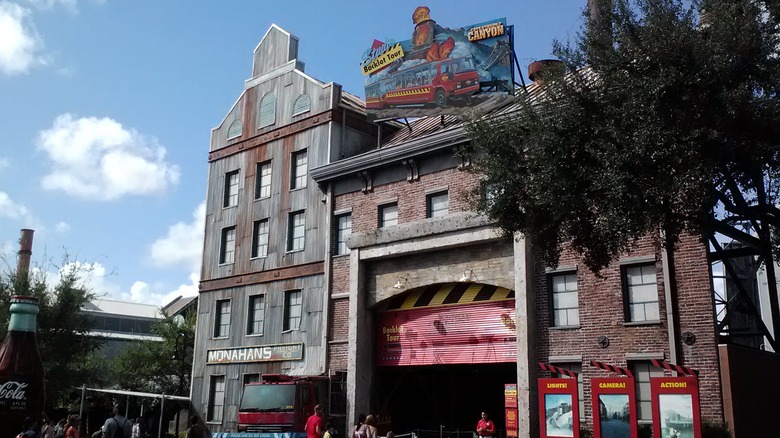Extinct Disney Parks Rides You Totally Forgot About
When Disneyland first opened in 1955, Walt Disney's dream of an immersive amusement park for both young and old came bursting to life. Granted, it was a rough birth, marred by a slew of problems and a dearth of functioning rides, but that's the risk of innovation. Within 2 months, the park had become such a success, it had welcomed 1 million guests. Disney's plan, though, was never to rest on his laurels, and he created a whole division of engineers to constantly invent, design, and build exciting new attractions. These Imagineers, as they'd come to be known, have kept the Disney parks vibrant and current. They led an expansion that's grown to encompass Disneyland and Walt Disney World, with six distinct parks in the U.S. and even more across the globe.
With that growth has come the bittersweet realization that not much remains in Disneyland of those earliest days. Mule rides and keel boats have long gone out of vogue. Old rides are removed to make room for the new as new technologies are created, new movies and shows take off, and guest tastes change and evolve. Sometimes, not even nostalgia can keep obsolete rides around, and even Disney would admit that their designs don't always hit the mark. With a constant stream of new excitement, it can be hard to keep track of all the rides of yesteryear, so here's a trip down Main Street's memory lane with a few extinct rides you may have forgotten.
Flying Saucers was a ride so nice, Disney tried it twice
The Flying Saucers weren't one of Disneyland's inaugural rides, but they were one of its most iconic. Opening in 1961 in Tomorrowland, the Saucers were Disney's "bumper cars of the future." Guests didn't drive them around, they flew them. Puffs of air levitated the saucers like an oversized air hockey table. Riders floated around bumping into each other, controlling their saucers with their own body movement. It lasted just over 5 years, but when Tomorrowland was redone into the New Tomorrowland in 1967, the Flying Saucers were scrapped.
Nearly 50 years later, Disney brought it back in California Adventure. Opening in 2012, these new flying saucers were dubbed Luigi's Flying Tires and were remade into tires to fit the Cars Land theme. The tires were enlarged to fit multiple passengers (one of the problems with the original ride was the small amount of riders it could accommodate at a time) and the air was turned back on. But the updated version just wasn't very exciting. The tires were too cumbersome to control or even move very fast. And the technology, it turned out, wasn't much more stable than it had been almost 50 years before. The ride lasted three years, before closing in 2015, once again relegating the doomed flying ride to the hazy mists of memory.
20,000 Leagues Under the Sea: Submarine Voyage gave guests a taste of vintage Disney
Remember when there was a lagoon in the middle of Magic Kingdom's Fantasyland? No, not Ariel's Grotto. Go back a bit further to the days of Captain Nemo and the league-spanning journey of the Nautilus. Disneyland's Submarine Voyage quickly become a guest-favorite since its addition in 1959, so when Disney World opened in 1971, the Magic Kingdom got its own unique version. 20,000 Leagues Under the Sea: Submarine Voyage redesigned the subs (actually just boats in which the riders sat under the water line) to look like they'd been plucked straight out of 1954's "20,000 Leagues Under the Sea." Add narration by Captain Nemo and a few nods to the classic Disney film as guests traveled from the North Pole to lost Atlantis, and Disney quickly had a fan-favorite on their hands.
Still, that didn't stop Disney from closing the ride in 1994. They removed the subs and gave the lagoon a "Little Mermaid" theme to meet and greet Ariel. Eventually, they drained the lagoon entirely and brought in Winnie the Pooh, before tearing that down and turning the area into what it is today: Seven Dwarfs Mine Train. Luckily, diehard 20,000 Leagues fans still fight to keep its memory from fading, and now, almost 30 years later, YouTube web series Defunctland had recreated the whole experience for VR.
Horizons took guests beyond the fan-favorite Carousel of Progress
Tomorrowland's famous Carousel of Progress first debuted at the 1964 World's Fair as a joint venture between General Electric and Disney. Walt Disney loved it so much, he moved it to Disneyland, then, in 1975, the Magic Kingdom, where it still runs to this day. So when Disney World designed its second park, Epcot, in 1982, it seemed like a no-brainer to again partner with GE for a landmark ride. The ride they came up with was called Horizons, though it didn't open until October of 1983, exactly one year after Epcot's debut.
Ostensibly a sequel to the Carousel of Progress, Horizons turned from the past and looked to the future, following a family out of the 20th century and into the 21st. It used the same omnimover technology as the Carousel, taking guests around a stage where they got to peak into the animatronic family's life, watching them on video calls, working on floating cities, terraforming deserts, and living in space colonies. Riders even got to choose how they wanted Horizons to end, picking from three choices to do one last flyover before coming back to the present. GE, though, dropped their sponsorship in 1993, and Horizons continued on sponsor-free for another six years before closing its doors in 1999. The ride and its colossal building were then scrapped to make room for Mission: SPACE.
Body Wars packed a ton of fun into a tiny package
For some wonderfully bizarre reason, 1989 was a big year for Disney and shrinkage. First they gave us the classic film, "Honey, I Shrunk the Kids," and then, four months later, a new motion simulator ride at Epcot called Body Wars. Riders entered through the Wonders of Life pavilion and stepped into the high-tech lab of MET: Miniaturized Exploration Technologies. Once inside, scientists informed guests that they'd have to be shrunken to tiny proportions to rescue the lost Dr. Lair, who had been miniaturized and injected into a finger to study the body's infection response. Guests boarded their vehicle, were shrunk down to injectable-size and sent on a wild journey through the heart and lungs, fighting off white blood cells until they recharged their tiny vehicle in the brain and regained normal size.
Built off of Disneyland's Star Tours technology, Body Wars scored Elizabeth Shue to play the stranded Dr. Lair, and pulled in Spock himself, Leonard Nimoy, to direct the whole endeavor. It continued to operate until 2007, but with a nearly 20-year-old story and lacking the franchise-recognizability of "Star Wars," it was only a matter of time before Disney shut it down to make room for something a bit more modern. Epcot closed the ride and shuttered the pavilion, leaving it to collect dust and fade from memory until the recent news that Disney was finally transforming the area into the new Play! pavilion for kids.
Maelstrom took you back to the time of Odin years before Marvel's Thor joined Disney
Once, in an age long past, Epcot guests could visit Norway and go on a thrilling and mysterious adventure through the North Sea. They called this journey Maelstrom, and it rolled a dark ride and a log flume rolled into one, taking riders back in time to the glory days of the Vikings where they met Odin, trolls, and even polar bears. The ride culminated in a confrontation with a three-headed troll who, angered by the trespassing guests, would send the log flume careening backwards towards a waterfall. Just before tipping over, the log would right itself and send riders plunging down almost 30 feet of water. Okay, maybe it wasn't historically accurate, but it was a fun little ride through Norse mythology.
But then in 2013, "Frozen" arrived and took over the world — including Norway. Norse trolls were out and talking snowmen were in. "Frozen" wasn't exactly Norwegian, but the kingdom of Arendelle was based off of Norway, so Maelstrom's pavilion seemed a good enough fit. Maelstrom shut down in 2014, and Frozen Ever After reopened in its place in 2016. Hopefully those temperamental trolls didn't throw too many people off the waterfall when they got the news.
Mission To Mars took guests into space before NASA ever made it
When Tomorrowland first opened in 1955, its big attraction was a ride called Rocket to the Moon. It was a flight simulator that delivered just as the name promised, 14 years before the Apollo 11 managed the same feat in real life. Riders sat in a circle around huge screens made to look like windows into space as they were given shakes, jolts, and puffs of compressed to simulate G-forces. In 1967, Disney rebranded the ride as Flight to the Moon, and the Magic Kingdom's Tomorrowland got its own version shortly after opening. Then, in 1975 both parks turned it into Mission to Mars. Moon travel had become too ho-hum by then. No one cared anymore, so they had to find a new exciting destination.
Though once an iconic part of Tomorrowland in both the Magic Kingdom and Disneyland, the dated technology just couldn't keep up. Flight simulation was done better in Star Tours, and even Martian travel had lost its luster. Disneyland shut it down in 1992 to turn it into a pizza joint, while the Magic Kingdom closed theirs in 1993 to replace it with the ExtraTERRORestrial Alien Encounter. The ride did, in a way, resurface in 2000 with a "Mission to Mars" movie based on it. But if you don't remember the film, don't worry, you aren't alone. It was panned by critics and viewers, and forgotten far faster than the ride.
ExtraTERRORestrial Alien Encounter traumatized a generation of children (and adults)
With the dated Mission to Mars gone, the Magic Kingdom needed something modern and exciting to take its place. So Disney did a total 180 and put in a white-knuckle scare-fest bluntly dubbed the ExtraTERRORestrial Alien Encounter. The ride's narrative was that something went wrong during a demonstration by alien company X-S Tech, and they accidentally beamed a monstrous alien into the midst of hapless Disney guests. This all took place in the same circular chamber as had been used in Mission to Mars, but these seats came with restraining bars that clamped down and trapped riders around a sinister-looking teleportation pod. The shakes and compressed air once used to simulate g-forces were turbo-charged to terrorize ride-goers as they were trapped in the dark with the monster.
When Alien Encounter first opened, Disney CEO Michael Eisner quickly shut it down again and told Imagineers to make it more frightening. It worked — probably too well. No official reason was given as to its demise, but Disney was supposedly beset with irate parents over the years who complained that it had traumatized their kids, despite all the warnings the park put up to let guests know that it was terrifying. When it closed in 2003, Disney did another 180 and replaced it with the family-friendly Stitch's Great Escape. Those who did get to experience ExtraTERRORestrial have spent decades trying to purge the terrifying experience from their minds.
Rocket Rods never quite took off
Chalk Rocket Rods up to rides that probably shouldn't have happened. In 1998, Disneyland revamped Tomorrowland in what was supposed to be a grand realignment to update the world of tomorrow for modern times. A lot of what they did, though, revolved around adapting existing infrastructure for new attractions — infrastructure like the PeopleMover. The PeopleMover was never exactly a ride, nor was it quite just transportation. Guests would take a train around Tomorrowland, weaving around and through buildings on a raised track that never stopped moving. It wasn't thrilling, but its tour and track was synonymous with Tomorrowland.
The new Tomorrowland needed something more exciting, though, so the PeopleMover became the Rocket Rods, a thrilling race where guests rode cars around the old track, speeding through Tomorrowland. Unfortunately, it never quite worked the way it was supposed to. It turns out that cutting costs by trying to retrofit 30-year-old attractions isn't always a good idea. Rocket Rods suffered from frustrating and increasingly severe breakdowns from its earliest days, until it closed "temporarily" in 2000. Disney continued to promise that it would be revamped and reopened, but finally, in 2001, they announced that it had never really worked, its long line caused too many problems, and they weren't going to bother ever reopening it.
Maliboomer gave riders a surprisingly typical California thrill
The Maliboomer was one of Disney California Adventures' inaugural rides, operating from the moment the park opened in 2001. This was back before California Adventures really figured out what it was all about, so the Maliboomer was a pretty straight-laced space shot. Riders climbed into seats situated around a tower so they could be shot into the air at scream-inducing speeds. It was the type of thing that you could probably find in any amusement park or seaside boardwalk, stripped of Disney charm and all. So if you can't remember whether you rode a ride like this at Disney or your local amusement park, don't worry, you're not alone. But that's apparently what Disney wanted. They plunked the Maliboomer down on Paradise Pier, a section of the park that was meant to look like a modern California boardwalk. It was an interesting choice, making a theme park situated in California resemble any generic park ... situated in California.
Eventually Disney realized they needed to figure out a more unique theme, and they revamped California Adventure. Paradise Pier transformed from modern seaside attraction to a charming Victorian boardwalk from the 1920s. And there were no space shots in the 1920s. So when Disney announced in 2010 that the Maliboomer would be removed to make room for attractions with more "romance and charm," no one was really surprised — or particularly disappointed.
Primeval Whirl brought a wild mouse (not named Mickey) back to the time of the dinosaurs
Situated in Animal Kingdom's DinoLand U.S.A., Primeval Whirl was one of Disney's few roller coasters when it opened in 2001. Well, it wasn't a full-fledged roller-coaster, but a wild mouse coaster, where riders careen in small carts around hairpin turns. Disney dressed the ride up with whimsical props around the idea that riders were traveling back in time to the meteor that wiped out the dinosaurs. It had almost a Seussian bent, but in the end it was a pretty basic coaster that had been bought from roller coaster manufacturers Reverchon Industries.
By the time Disney announced they were shutting it down in July of 2020, they'd already downgraded its operation to "seasonal." There was some talk about refurbishment, but that was eventually dropped and Disney decided during the coronavirus shutdown that when the park returned, Primeval Whirl would not be returning with it. It had a respectable almost-20-year run, but it still may be time to cue a collective shrug and a question of "Primeval what?"
The Studio Backlot Tour peered behind the curtain
Back when Disney's Hollywood Studios opened, Disney Imagineers had the wild idea to make it both a park and a working film and television studio. They designed the park's main attraction, the Studio Backlot Tour, to give guests a peek behind the entertainment curtain through the park's backlot. A tram would take guests through what was supposed to be a studio backlot but was really, like much of Disney, more akin to an expertly crafted artificial ride. The highlight was Catastrophe Canyon, where the tram would stop just as "filming" began. An earthquake would shake the tram, cause a fuel tanker to explode in a fireball, and unleash a torrent of water to wash over the whole scene.
In its first incarnation, the Studio Backlot Tour took hours to complete, much of that thanks to the walking portion. That soon got chopped out and made into its own tour, significantly shortening the time. Then in 2003, Residential Street was walled off and closed down to make room for a new stunt show, cutting into the tram time. In 2008, the new Toy Story ride chipped away a little more room, and shrank the experience even more. By the time it closed in 2014, the tour had been fading away and out of guests' minds for years. There were more exciting things to focus on, like Toy Story Land and Star Wars Galaxy's Edge, both of which replaced the sprawling backlot.
